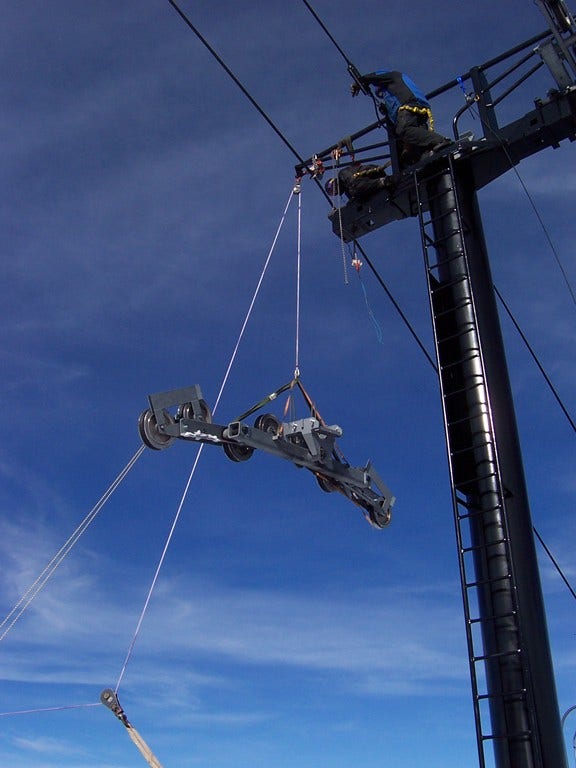Top Tips on Caring for Wire Ropes

We need to take proper care of our tools and equipment to ensure their longevity and endurance. Their safe and prolonged use is dependent upon the upkeep that they receive. I’m sure you would agree that looking after them isn’t easy.
Wire Ropes
A wire rope is one of the most essential equipment in several industries. Since it is a consumable item, it comes with a shelf life. It is, typically, used in heavy industries and due to the nature of the work it serves its properties are bound to change when in use. In the beginning, each wire and strand settles in place and the rope’s strength increases. On reaching its maximum potential, however, the strength starts to deteriorate rapidly.
This difference in the strength of the rope is brought about by factors such as changes in the structure of the rope, wire breaks, corrosions and abrasions. Some would argue about replacing a wire rope with a chain. But this isn’t feasible as a chain is a series of connections of load bearing elements. If even one link in the chain breaks, it will take only a split second for the entire lifting device to fail.
A wire rope, on the other hand, compiles various wire strands together which makes it sturdy and resilient. It can therefore be operated safely even after a couple of breaks.

Inspection and Examination
Since wire ropes are mainly used in heavy lifting, it is advisable to carry out timely inspections and examinations. It is important to ensure the removal of defective ones, before they break down completely and lead to injury or accident.
There is a minor difference between an ‘inspection’ and an ‘examination’ of wire ropes though. In an inspection, a careful and intensive analysis of the condition of the rope and the fittings is carried out without dismantling it. In an examination, however, a careful and intensive analysis of the state of the rope and the fittings is carried out by a qualified authority through visual assessment and non-destructive testing. This may also require dismantling the wire.
A wire rope should ideally be inspected by trained and experienced workers at the start of every shift or when resuming stalled work. Usually, machine operators are trained to visually assess the entire wire rope, with special emphasis on the points of attachment to the equipment.
A thorough inspection also needs to be carried out after reattaching or refitting the rope on the same or different equipment. Should a change in the condition of the rope be detected at any time during the inspection, it should immediately be reported and the wire should be taken out of service until further examination by an expert.
Some criteria for examining a wire rope are:
- Type of appliance/system
- Design of the appliance/system
- Statutory requirements
- Operational environmental conditions
- Procedure and frequency of operation
- Manufacturer’s recommendations
- Outcome of prior inspections and examinations
- Previous experience
Maintenance of Wire Ropes
Proper care is required for the maintenance and upkeep of wire ropes. This is directly related to unloading, storing, handling, seizing and installing it.
- Unloading
The rope in a reel or a coil is largely unprotected and a fall can lead to serious destruction. Hence, when handling a wire rope, ample care needs to be taken not to drop the reel. Its collapse can break the reel and damage the wire rope, thereby making its removal very difficult.
The ideal procedure for lifting a reel with ropes is by using a spreader bar (of an adequate length) to keep the sling legs from coming in contact with the reel. This will deter the flanges of the reel from bending, distortion, or damage in any way by the slings.
- Storing
Wire ropes should be stored in well-ventilated, dry and covered areas or sheds and should not be allowed to come in contact with the floor. Make sure that they are protected from dust, water, steam, brine, chemical fumes and adverse climatic conditions. Moisture can play spoil sport and induce corrosion in them. So if they are required to be stored in the open, ensure that you cover them properly.
It is important to store the reel in a dry, cemented place to prevent termite infestation. Occasionally turning it will help prevent the wearing off of the rope lubricant. If ropes are stored for long time, it is advisable to get them examined periodically and apply a coat of lubricant to them.
- Handling
At times, wire ropes tend to kink while uncoiling or unreeling. A kink can permanently cause a weak spot in the rope, which will wear out quicker than the rest of the rope. Care must be taken when unreeling/uncoiling the rope by ensuring that the reel rotates as the rope unwinds to avoid kinks.
- Seizing
Always make sure that before a rope is cut at a particular spot, it is properly seized from both sides, i.e. it is wound by soft iron wires to prevent an occurrence of flyaway strands. Usually, two or more seizings are required to be made on each side.
- Installation
It is important to take into account the design factor of the equipment before installing a wire rope. This should preferably be done by a knowledgeable and experienced person as the rope is at a great risk of being damaged at this stage. It is important to check the rope’s diameter prior to installing it as wrongly measured diameters will result in a failed rope. Carrying out a risk assessment before installing the rope to nullify chances of damage to it may also help.
Conclusion
It is important to adhere to safety guidelines and manuals when working with heavy and sensitive equipment. I hope the above mentioned points offered you some perspective on the various aspects of dealing with wire ropes.
Shop Online Wire Rope








